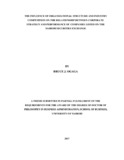| dc.description.abstract | Business survival the world over is largely dependent upon their corporate strategies and
extant structural configuration. The main purpose of a firm is to achieve sustainable
competitive advantage in the industry in which it is operating. Scholars generally concur
that strategic content and orientation, by and large, affect firm performance. Researchers
and stakeholders have attempted to unravel how their firms can remain competitive by
ensuring sustainable superior performance. Despite these efforts, it is still difficult to
explain how similar firms operating in the same industry would manifest themselves
differently and have variations in their performance. The broad objective of the study was
to investigate the influence of organizational structure and industry competition on the
relationship between corporate strategy and performance of companies listed on the
Nairobi Securities Exchange. Consequently, four specific objectives were formulated with
corresponding hypotheses which were statistically tested. The context of the study was
publicly quoted companies in Kenya, and relied on both secondary and primary data.
Anchored upon industrial organization economic theory, contingency theory and
stakeholder theory, the study was an empirical investigation of the impact of industry
competition and organizational structure on the strategy-performance relationship of
companies listed on the publicly quoted companies. The research population comprised all
the sixty three companies listed on the bourse. A descriptive census survey was conducted
on the companies with a response rate of seventy three percent. The respondents comprised
mainly, top management staff, of the Kenyan listed companies. Statistical tools were
applied to evaluate variations in manifestations of the variables and to test the hypotheses
respectively. Baron and Kenny model and hierarchical regression used to test for
moderating influence of industry competition whereas the mediating role of organizational
structure was tested using stepwise regression method. The key finding is that joint effect
of the predictor variables was greater than the single effect of corporate strategy on
performance. The overall results show that the finding was statistically significant in
respect of non financial performance. This supported Industrial economic theory,
contingency theory and stakeholder theory. The study makes significant contribution to
strategic management theory, policy issues and managerial practice. The findings are
intended to assist organizations in formulating and concretizing policies for continuity of
organizational success. It offers suggestions and recommendations for policy makers that
are poised to improve performance. Consequently, the study also proposes areas for further
research. | |



